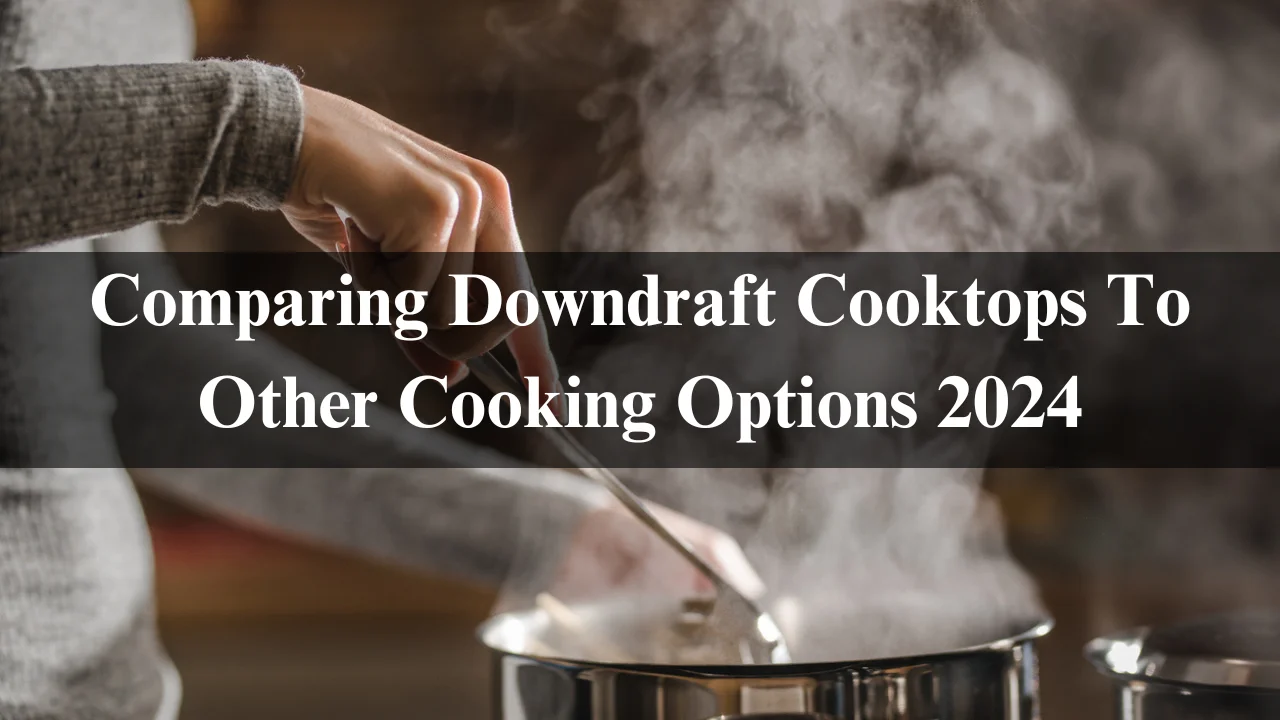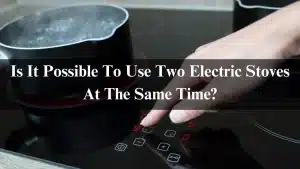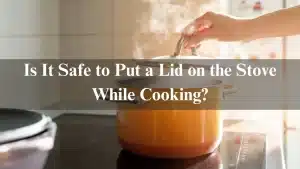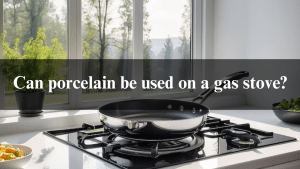Hey there! Imagine you’re about to cook a delicious meal but wait—have you ever thought about how your cooktop affects the way you cook? Most people don’t think twice about their cooking surface, but there are lots of options out there. One of the most interesting ones is the downdraft cooktop. If you’re curious about how it compares to other cooking options, you’re in the right place!
Today, we’re diving into the world of cooktops and showing you how a downdraft cooktop stacks up against other popular choices. By the end of this article, you’ll know exactly what makes each option unique so you can choose the best one for your home. Let’s get started!
Table of Contents
What is a Downdraft Cooktop?
If you’re not familiar with a downdraft cooktop, don’t worry—you’re not alone! These cooktops are pretty cool, and they have a unique feature that sets them apart from others.
How It Works
A downdraft cooktop looks like a regular stovetop, but it has a built-in vent that pulls smoke and steam downward. That’s right—rather than having a vent overhead like traditional range hoods, the ventilation system is right inside the cooktop itself.
Think of it like a kitchen vacuum cleaner that sucks up smoke and odors right at the source!
Why It’s Different
Most cooktops require an overhead vent, which can be bulky or hard to install. A downdraft cooktop eliminates that need by having the vent built right into the unit. This can save space and make your kitchen look sleeker and less cluttered.
Other Popular Cooking Options
Downdraft cooktops are just one choice among many. Let’s take a look at some other popular options so we can compare them later.
Traditional Cooktops
This is what you’ll find in most homes. Traditional cooktops are usually gas or electric, and they work with an overhead range hood to pull smoke, steam, and cooking odors out of the air.
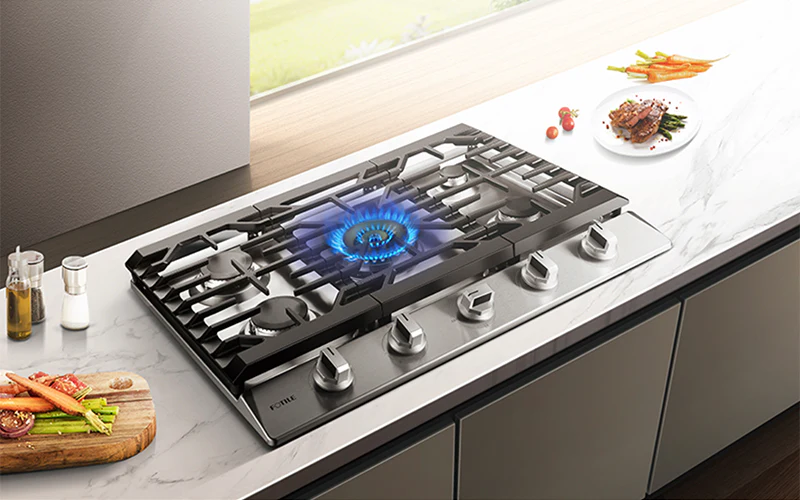
Range Hoods
A range hood is a large vent that sits above your cooktop. It uses a fan to suck up smoke and steam, filtering it outside or recirculating the air inside. Range hoods are powerful, but they can take up a lot of space in your kitchen.
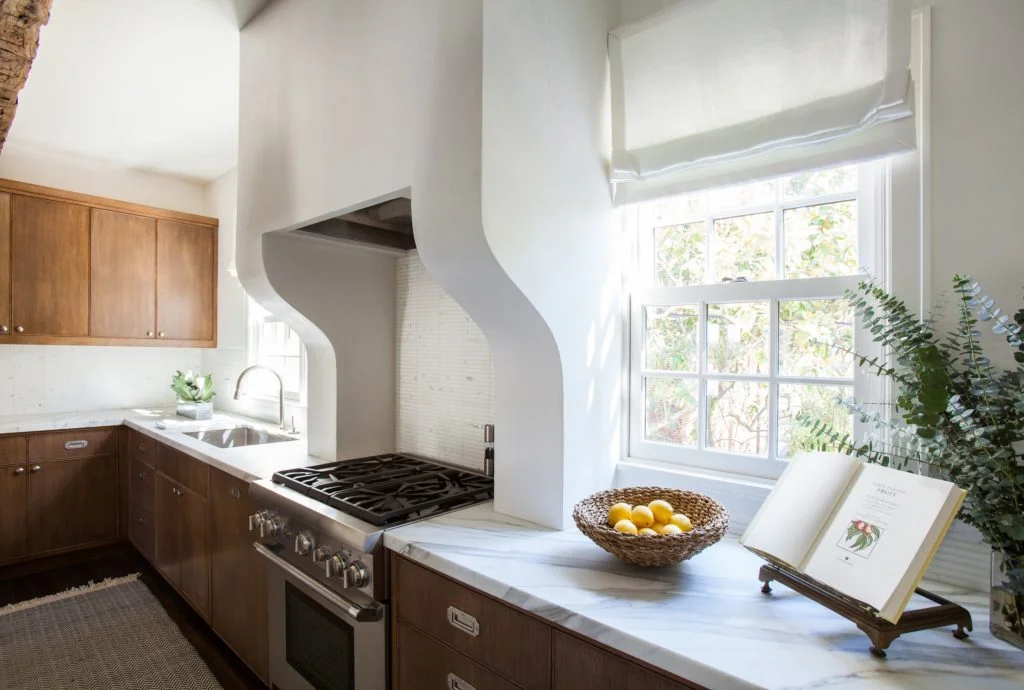
Induction Cooktops
An induction cooktop uses electricity to heat pots and pans directly, which makes it faster and more energy-efficient. You’ll need special cookware, though, since it only works with certain types of metal. These cooktops usually work with an overhead vent or range hood.
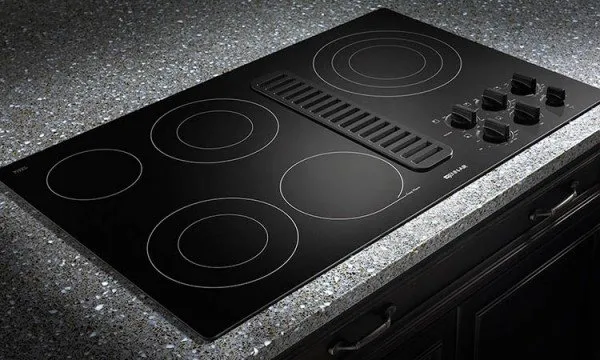
The Pros and Cons of Downdraft Cooktops
Every cooktop has its strengths and weaknesses. Here’s a closer look at the good and the not-so-good sides of downdraft cooktops.
Advantages
- Space-saving: With no need for an overhead vent, you get a cleaner, more open kitchen. This is great for kitchens with limited space!
- Sleek design: Downdraft cooktops look modern and stylish, perfect for people who want a minimalist kitchen design.
- Flexibility: You can place a downdraft cooktop on an island, or anywhere you want without worrying about installing a range hood.
Drawbacks
- Limited power: Downdraft systems might not be as powerful as a traditional range hood, especially for high-heat cooking like frying.
- Installation can be tricky: Because the vent system is built-in, you might need a professional to install it, especially if your kitchen wasn’t designed for this type of system.
- Price: Downdraft cooktops can be more expensive than regular cooktops.
How do Downdraft Cooktops compare to Other Options?
Now that we’ve looked at some different types of cooktops let’s compare downdraft cooktops to the others in a few key areas.
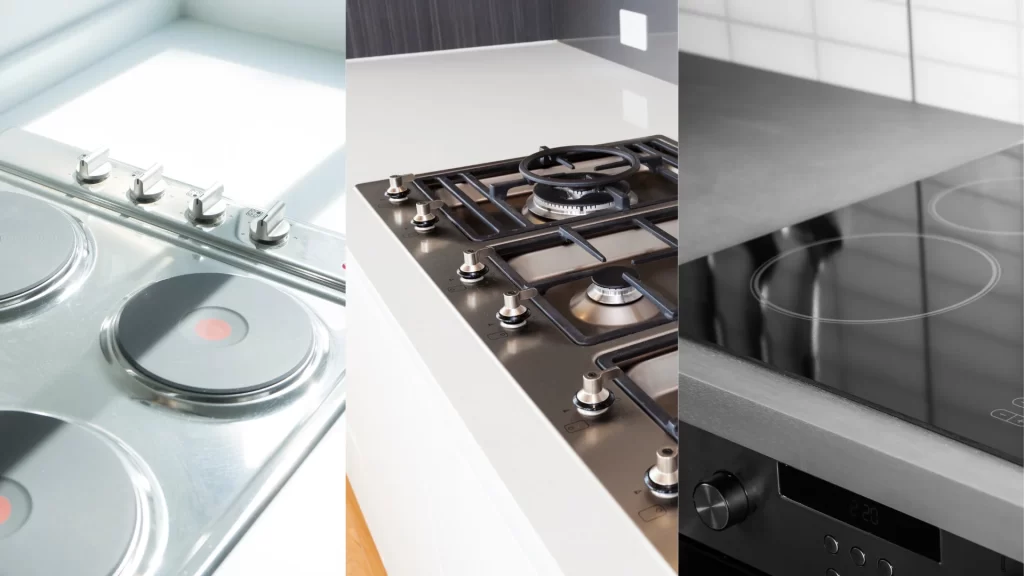
Efficiency and Ventilation
Traditional range hoods are usually more powerful than downdraft systems. They’re designed to pull a lot of air, which makes them better for intense cooking. However, downdraft cooktops can still handle most everyday cooking tasks just fine.
Induction cooktops, while fast and efficient, usually require a separate venting system, making them less streamlined than a downdraft system.
Style and Design
Downdraft cooktops are the clear winner here if you want a clean, modern look. Without a bulky hood, your kitchen can feel more open. Range hoods, on the other hand, can be large and take away from the sleekness of your space.
Induction cooktops can also be very sleek, but they still require an external vent system, which adds some bulk to your kitchen design.
Installation and Maintenance
Installing a downdraft cooktop can be more complex than a traditional cooktop because the vent is built into the appliance. You might need to reroute some kitchen plumbing or electrical systems, and that can get pricey.
Range hoods, especially large ones, also require installation work, but it’s usually more straightforward. Induction cooktops, meanwhile, need specific cookware and can be more expensive upfront, but they’re easy to maintain.
Real-Life Examples: Which Option is Right for You?
Choosing the right cooktop for your kitchen depends on your space and your cooking needs. Let’s look at a few real-life examples to help you decide.
For Small Kitchens
If you’re working with limited space, a downdraft cooktop is a great option. Since you don’t need an overhead vent, you’ll have more flexibility to place it wherever you want. A smaller kitchen would really benefit from the sleek, space-saving design.
For Large, Open Spaces
If you have a big kitchen or a kitchen island, an induction cooktop with a separate range hood might work better. The hood can handle large amounts of steam and smoke, making it more efficient for cooking large meals or using multiple burners at once.
For Homes with Specific Needs
Do you love cooking high-heat dishes like stir-fries? A traditional gas cooktop with a powerful range hood might be best. But if you’re more of a casual cook who values a modern, open kitchen, a downdraft cooktop could be the perfect fit.
Key Takeaways
- Downdraft cooktops are sleek, space-saving, and great for smaller kitchens.
- Traditional cooktops with range hoods are better for high-heat, heavy-duty cooking.
- Induction cooktops are efficient and modern but need special cookware and a separate vent.
- Choose a cooktop based on your kitchen size, cooking style, and design preferences.
Related Articles:
Cooking with Downdraft Cooktops Pros And Cons 2024
Creative Cooking Techniques on an Electric Cooktop
Conclusion:
After looking at all the options, it’s clear that downdraft cooktops are great for people who want a sleek, modern kitchen with limited space. They’re easy to use, efficient for most cooking tasks, and eliminate the need for bulky overhead vents.
However, if you’re a heavy-duty cook or have a large kitchen, traditional cooktops with a range hood or an induction cooktop might suit your needs better. It all depends on your cooking style and the space you have to work with!
FAQs
Are downdraft cooktops as effective as overhead hoods?
Downdraft cooktops offer good ventilation for moderate cooking, but they could be more effective at handling heavy smoke and grease compared to overhead hoods.
Can downdraft cooktops be installed in any kitchen?
Downdraft cooktops require specific installation setups, particularly for venting, which may only be feasible in some kitchens.
Do downdraft cooktops work well with gas burners?
Yes, downdraft cooktops can work with gas burners, but the ventilation might need to be more efficient with larger pots that block the airflow.
How do downdraft cooktops compare in price to traditional options?
Downdraft cooktops are generally more expensive due to the integrated ventilation system.
Can downdraft cooktops vent to the outside?
Yes, many downdraft cooktops offer the option to vent air outside, although recirculating models are also available.

